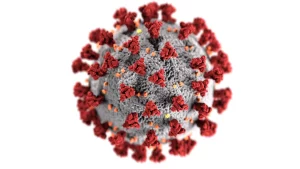This is how the AI article summary could look. Lorem ipsum dolor sit amet, consectetur adipiscing elit, sed do eiusmod tempor incididunt ut labore et dolore magna aliqua. Ut enim ad minim veniam, quis nostrud exercitation ullamco laboris nisi ut aliquip ex ea commodo consequat.
How do you test for COVID 19?

Testing for COVID-19 typically involves a combination of clinical evaluation, medical history, and laboratory tests. Here’s a breakdown of the common methods:
Clinical Evaluation
-
Symptoms: fever, cough, loss of smell, shortness of breath, and fatigue.
-
Other Medical History: including any underlying conditions, travel history, and exposure to individuals with confirmed COVID-19.
Laboratory Tests
To test for COVID-19, you can use a rapid lateral flow test (LFT) or a PCR test, both of which involve taking a swab from your nose and throat.
Here’s a more detailed explanation:
Rapid Lateral Flow Test (LFT)
- This test, also known as a Rapid Antigen Test (RAT), looks for viral proteins (antigens) in your nose and throat.
- You can perform this test at home or at a testing centre.
- The results are usually available within 15-30 minutes.
RT-PCR Test (Reverse Transcription Polymerase Chain Reaction, or more simply ‘PCR’)
- This test detects the genetic material (RNA) of the virus.
- It is more accurate than a LFT.
- It is sent to a testing centre.
- The results are usually available within a few days.
How the tests are performed
- Swab: In both tests, a swab is used to collect a sample from the back of your throat and inside your nose.
- LFT: The swab is placed into a test cartridge, and the results are read visually.
- PCR: The sample is sent to a lab for analysis.
Do you need a test?
Most people no longer need to take a coronavirus test, but you can still access testing if you have a health condition which means you’re vulnerable.
Serology (Blood) Tests
These tests detect antibodies against COVID-19 in the patient’s blood. They are usually only done in hospital when a definite diagnosis is important.
Accuracy and Limitations
If results are unclear, consult with a doctor. They can recommend next steps based on the results.
Other resource
